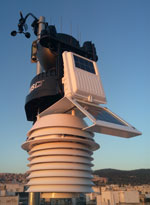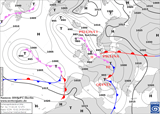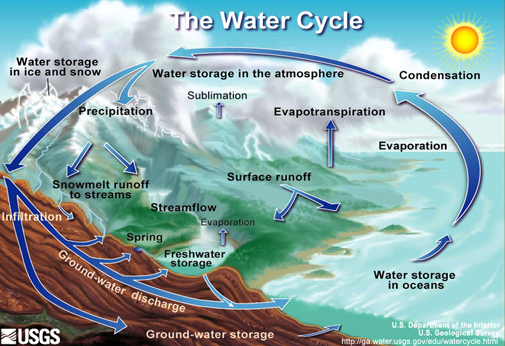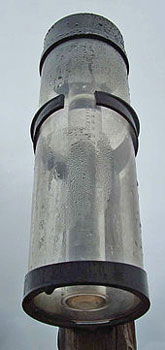Enter a number representing a temperature in either the Celsius box or the Fahrenheit box and click on the Calculate button (or anywhere else other than the data field). This uses an adaptation of the formula to do the conversion but as you will see, provides decimal accuracy.
This converter requires the use of Javascript enabled and capable browsers. In the formulas below, / represents division, * represents multiplication, - subtraction, + addition and = is equal.
Tc = (5/9)*(Tf-32); Tc = temperature in degrees Celsius, Tf = temperature in degrees Fahrenheit.
For example, suppose you have a Fahrenheit temperature of 98.6 degrees and you wanted to convert it into degrees on the Celsius scale. Using the above formula, you would first subtract 32 from the Fahrenheit temperature and get 66.6 as a result. Then you multiply 66.6 by five-ninths and get the converted value of 37 degrees Celsius.
Below is the formula to convert a Celsius scale temperature into degrees on the Fahrenheit scale.
Tf = (9/5)*Tc+32; Tc = temperature in degrees Celsius, Tf = temperature in degrees Fahrenheit.
Assume that you have a Celsius scale temperature of 100 degrees and you wish to convert it into degrees on the Fahrenheit scale. Using the stated formula, you first multiply the Celsius scale temperature reading by nine-fifths and get a result of 180. Then add 32 to 180 and get the final converted result of 212 degrees on the Fahrenheit scale.
Below is another accepted conversion method that works just as well and perhaps might be easier to remember. No matter which direction you want to covert, Fahrenheit to Celsius or Celsius to Fahrenheit, always first add 40 to the number. Next, multiply by 5/9 or 9/5 just like the first method. Then, always subtract out the 40 you just added to yield the final result.
For an example of this method, we'll use the values we used in the initial example, 98.6 F and 37 C, which are equal.
To convert from F to C, try these calculations manually:.
98.6 + 40 = 138.6, and 138.6 * 5/9 = 77. For the final calculation, remove the 40. 77 - 40 = 37.
To convert from C to F, try these calculations manually:.
37 + 40 = 77, and 77 * 9/5 = 138.6. For the final calculation, remove the 40. 138.6 - 40 = 98.6.
The Celsius temperature scale is still sometimes referred to as the "centigrade" scale. Centigrade means "consisting of or divided into 100 degrees;" the Celsius scale, devised by Swedish Astronomer Andres Celsius (1701-1744) for scientific purposes, has 100 degrees between the freezing point (0 C) and boiling point (100 C) of pure water at sea level air pressure. The term Celsius was adopted in 1948 by an international conference on weights and measure.
|






























